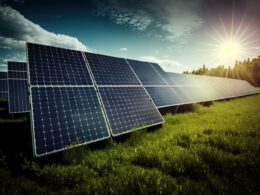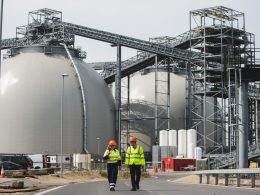Global energy investment is set to hit an all-time high of $3.3 trillion in 2025, driven largely by a surge in funding for clean energy technologies, according to the latest World Energy Investment report by the International Energy Agency (IEA). The report shows that China has cemented its position as the world’s single largest energy investor, accounting for nearly one-third of global clean energy spending.
Investment in clean technologies—including renewables, nuclear, electricity grids, energy storage, low-emissions fuels, and efficiency measures—is projected to reach $2.2 trillion this year, double the amount allocated to fossil fuels. The shift reflects a combination of climate goals, industrial policy strategies, and concerns over energy security, the IEA notes.
“Energy security is emerging as a key driver of record investment levels, as governments and firms seek insulation from geopolitical and economic risks,” said IEA Executive Director Fatih Birol. He cautioned, however, that while some investors are hesitating over new approvals, there is limited impact so far on projects already underway.
Birol highlighted China’s dominance, pointing out that since 2015, when it narrowly overtook the United States in energy investment, it now spends almost as much as the EU and US combined. Its funding spans a wide array of technologies, from solar and wind to nuclear and electric vehicles.
Globally, the balance of energy investment has shifted decisively towards electricity. A decade ago, fossil fuel investments outpaced electricity infrastructure by 30%. Today, spending on electricity—including generation, grids and storage—is 50% higher. Solar photovoltaic (PV) technology leads the charge, set to attract $450 billion in 2025, more than any other energy source.
Battery storage investment is also soaring, expected to surpass $65 billion this year. Meanwhile, nuclear power investment has increased by 50% over the past five years, projected to reach $75 billion.
However, grid infrastructure is lagging. At $400 billion annually, investment in electricity grids remains insufficient to support the pace of electrification. The IEA warns that to maintain grid stability, investment must match generation spending by the early 2030s—a goal hampered by regulatory delays and supply chain bottlenecks.
The report also notes divergent trends in fossil fuels. While upstream oil investment is forecast to decline by 6%—its first drop since the pandemic-induced slump in 2020—driven mainly by reduced US tight oil spending, liquefied natural gas (LNG) investment is booming. New projects in the US, Qatar, and Canada are expected to deliver the largest LNG capacity expansion on record between 2026 and 2028.
Coal investment, meanwhile, remains robust in parts of Asia. China alone began construction of nearly 100 GW of coal-fired power in 2024, pushing global coal project approvals to their highest level in nearly a decade.
The report highlights persistent global disparities. Africa, despite being home to 20% of the global population, accounts for just 2% of clean energy investment. Overall energy investment on the continent has declined by a third over the past decade, hindered by shrinking fossil fuel funding and insufficient growth in renewables. The IEA calls for increased international public finance to catalyse private capital flows into developing regions.
Now in its 10th edition, the report also introduces an interactive data tool that compares energy investment trends across sectors and regions from 2016 to 2025.




















